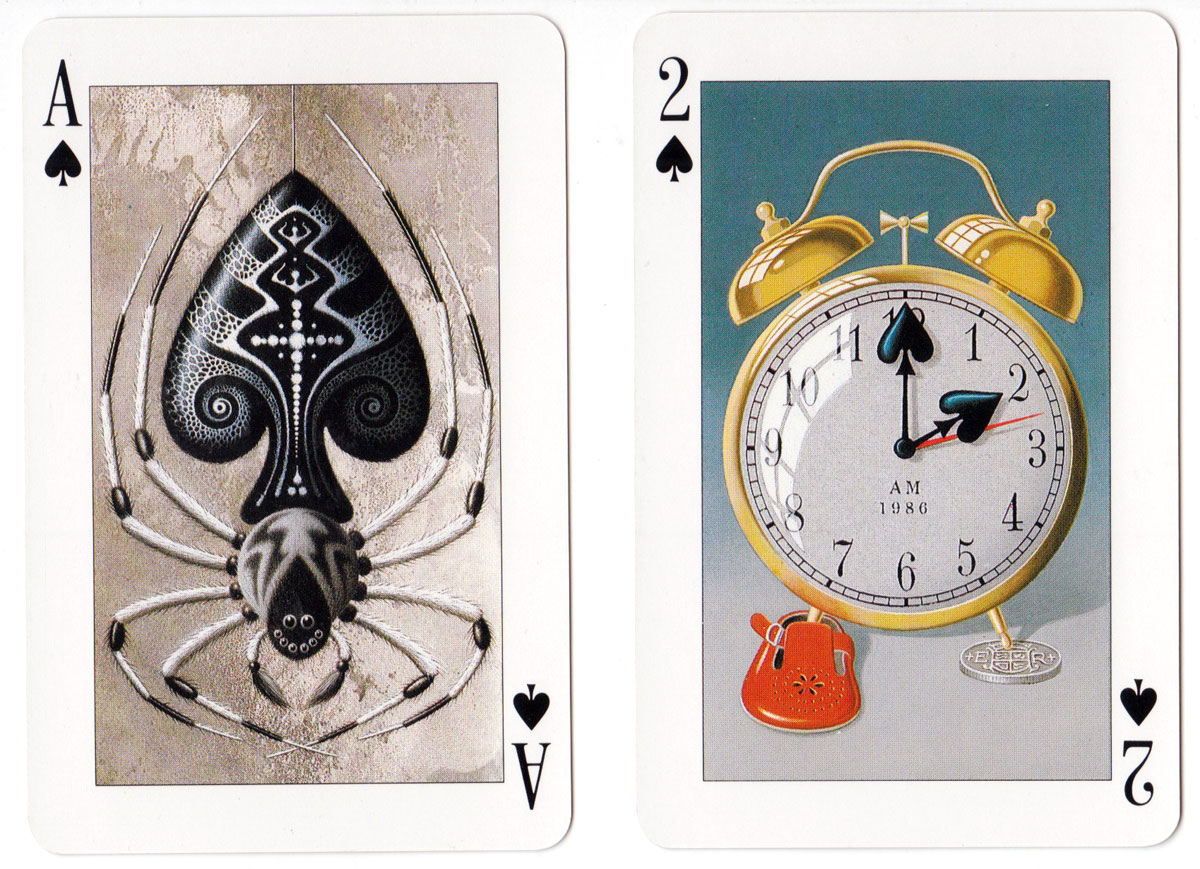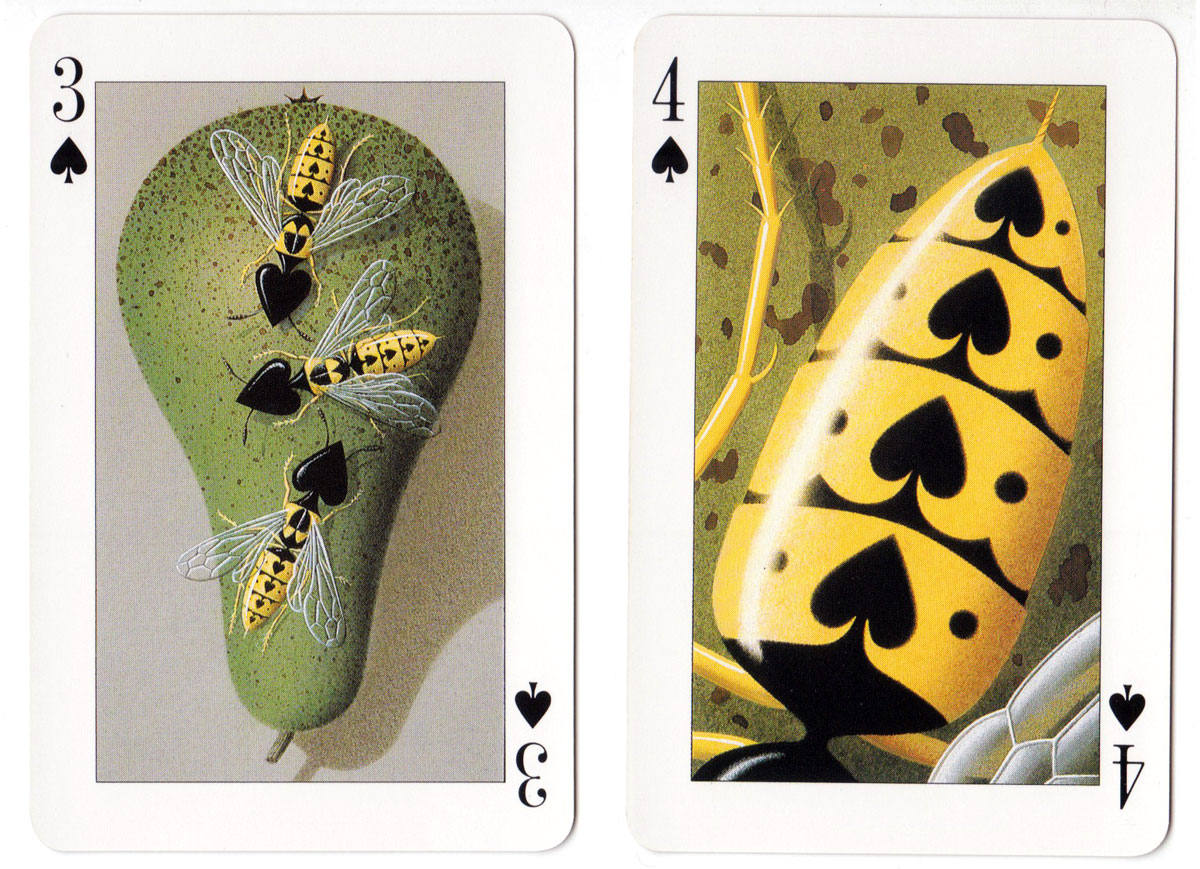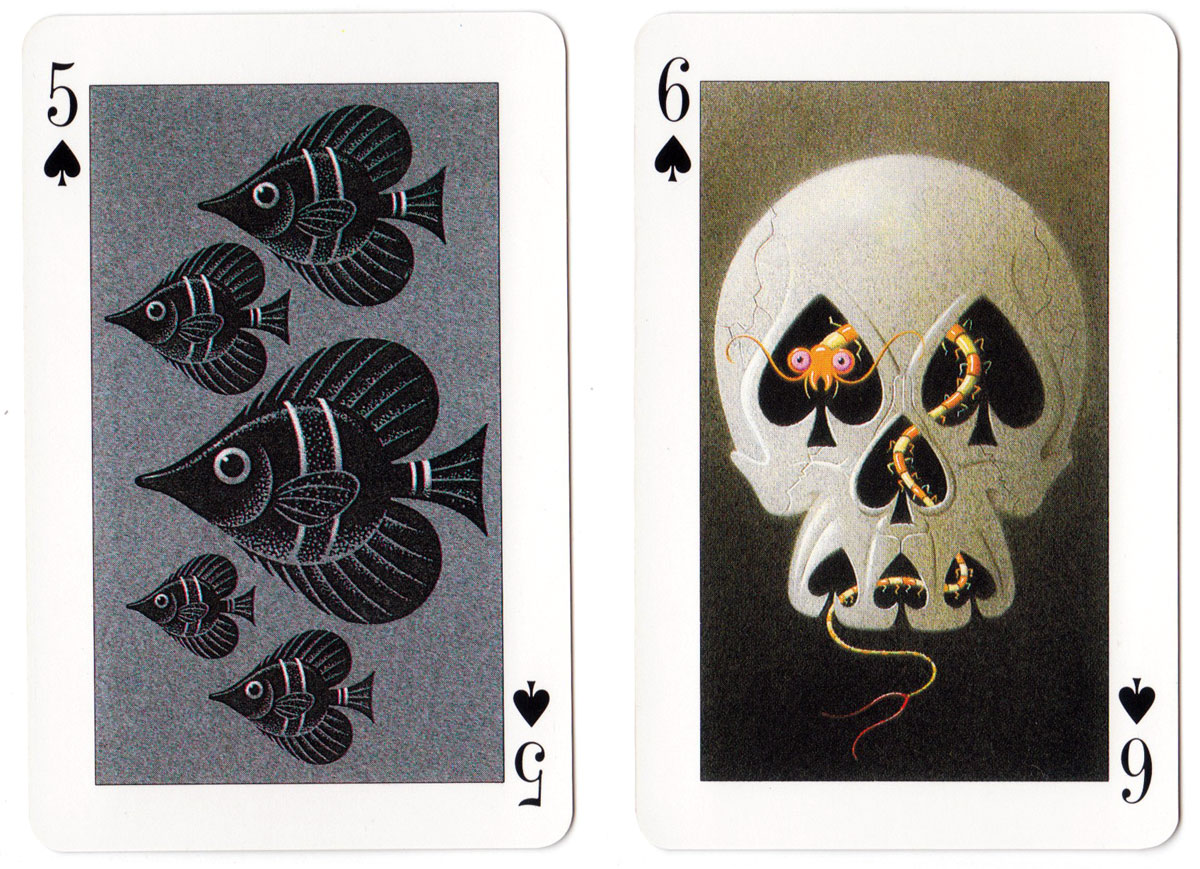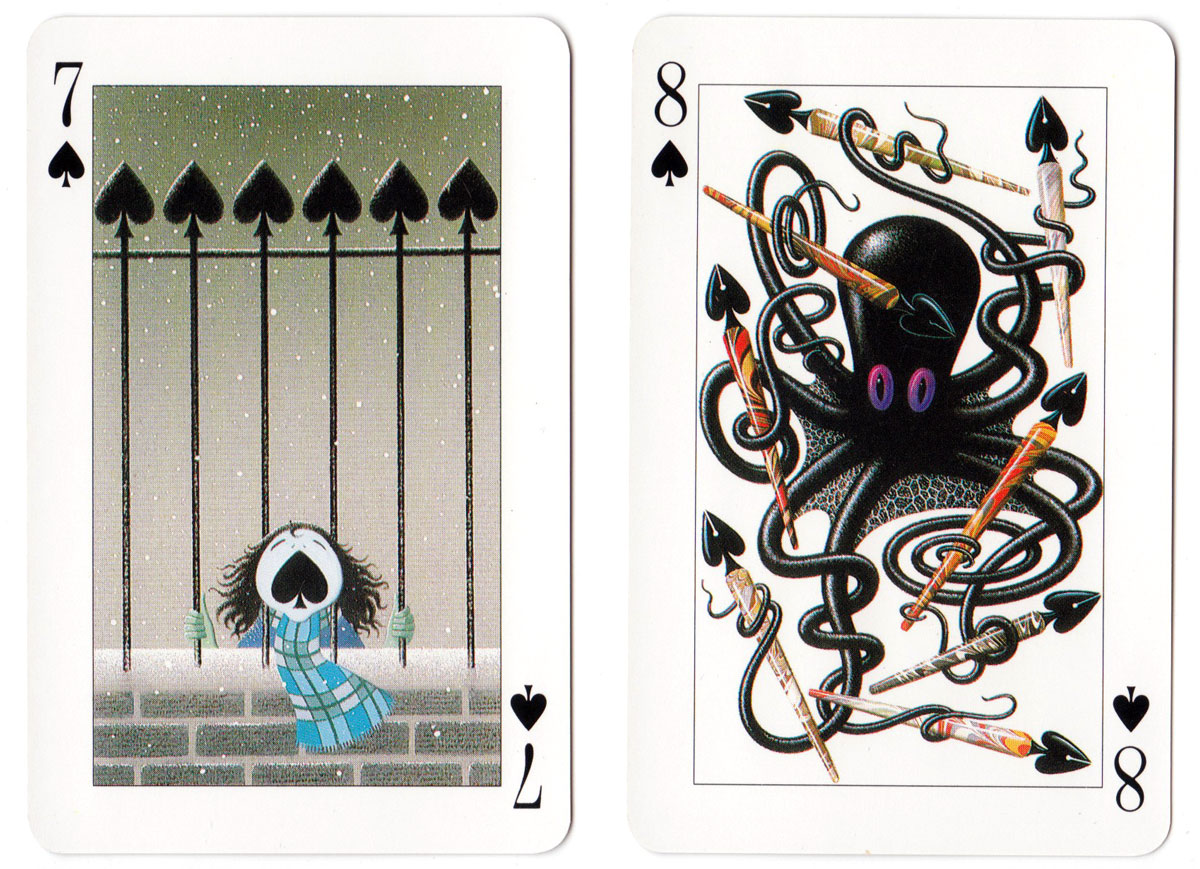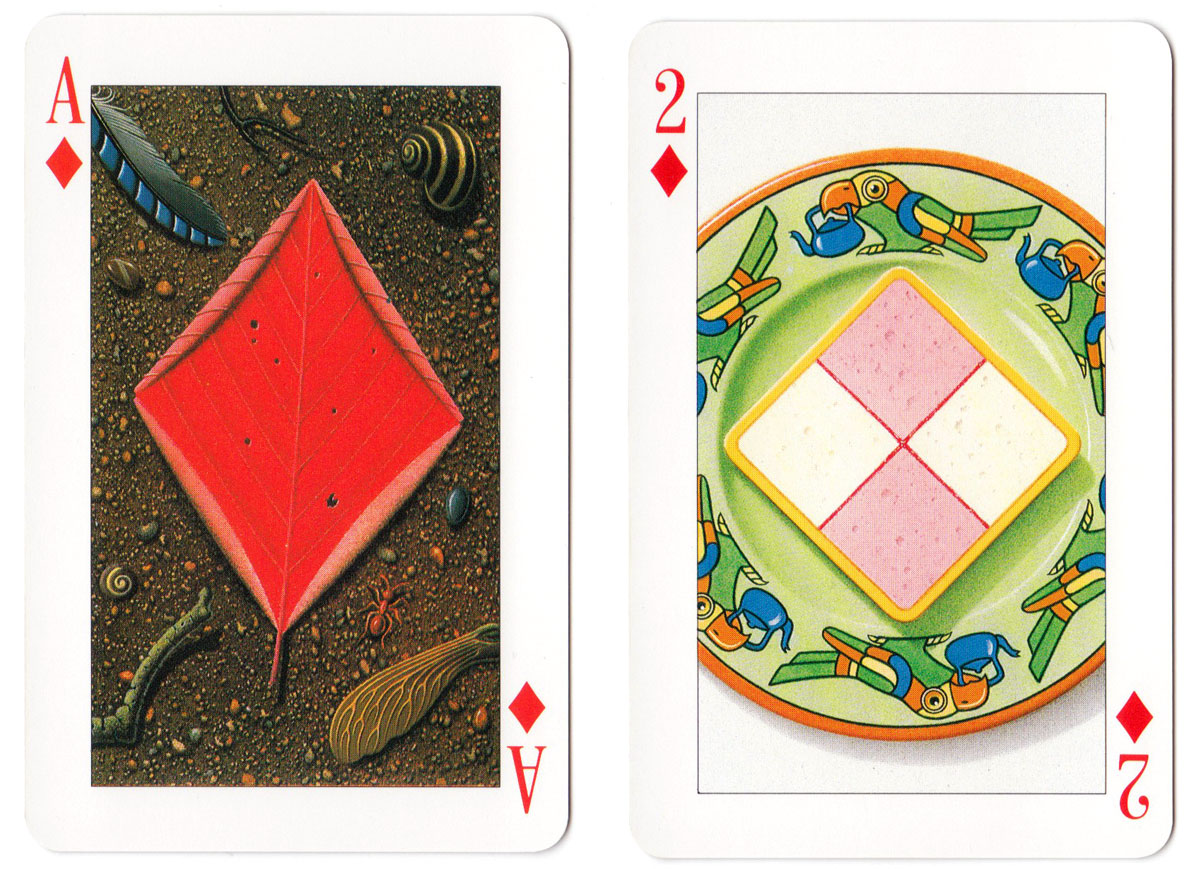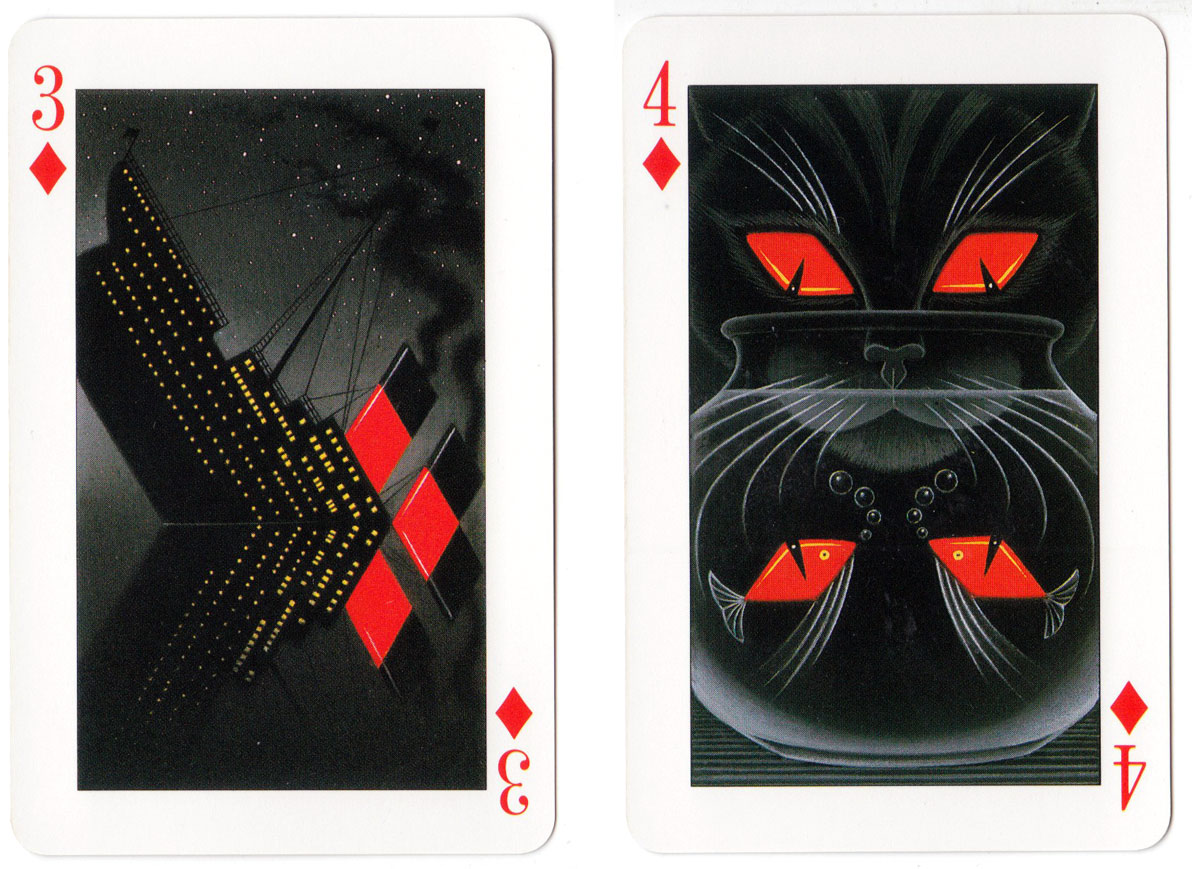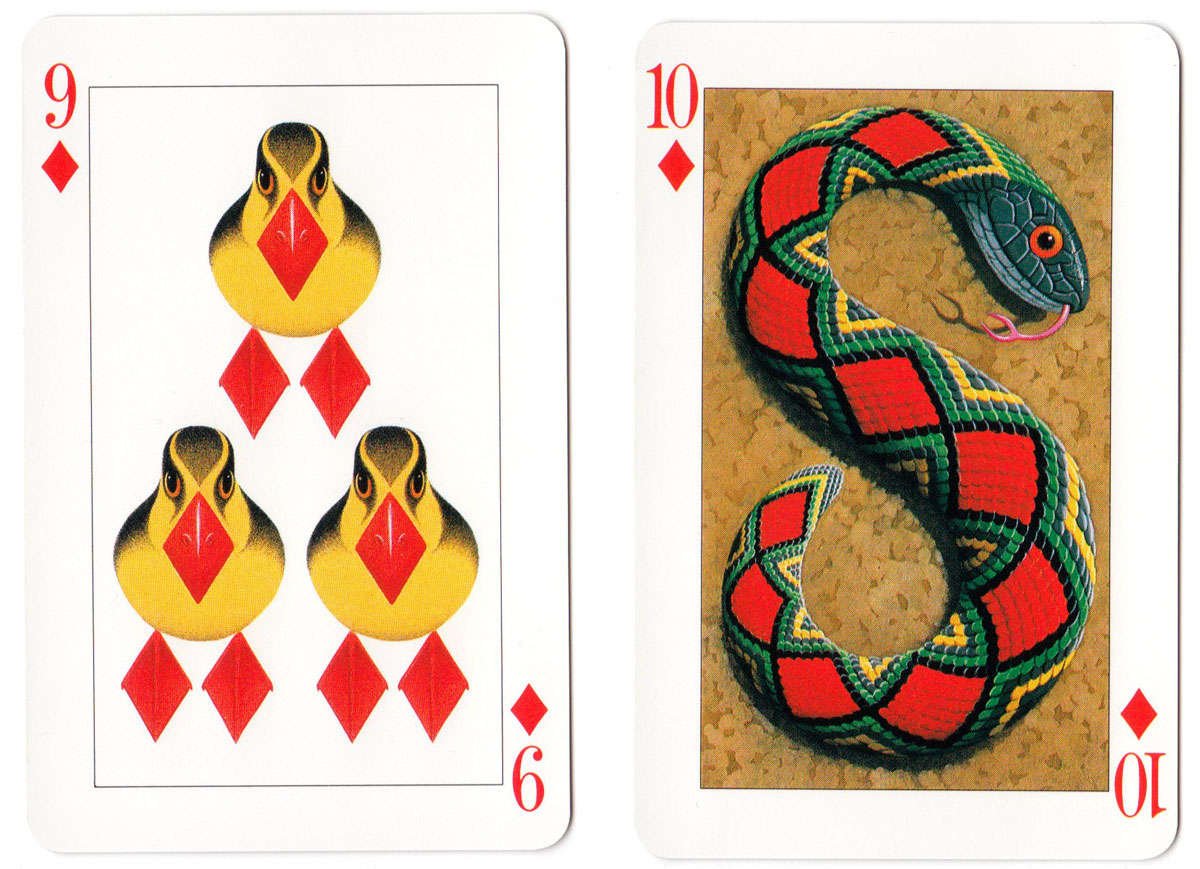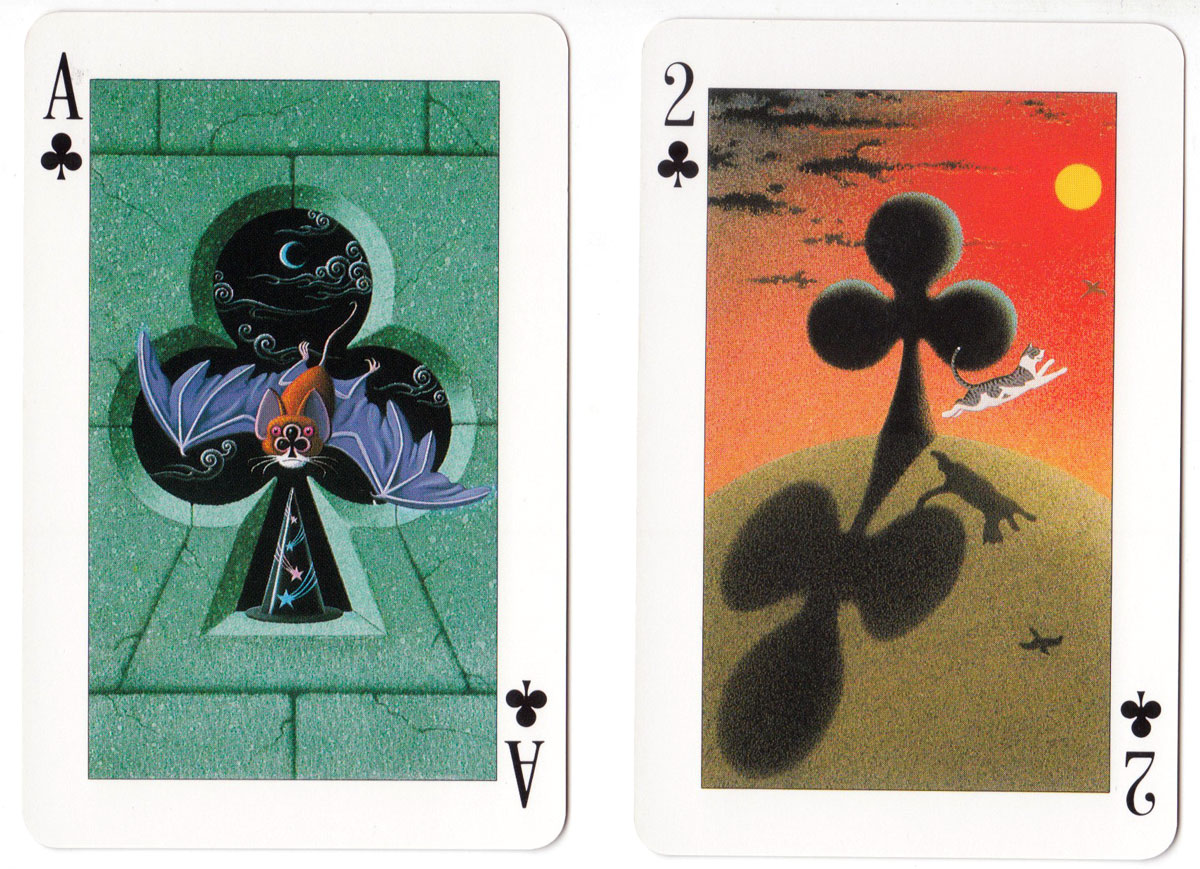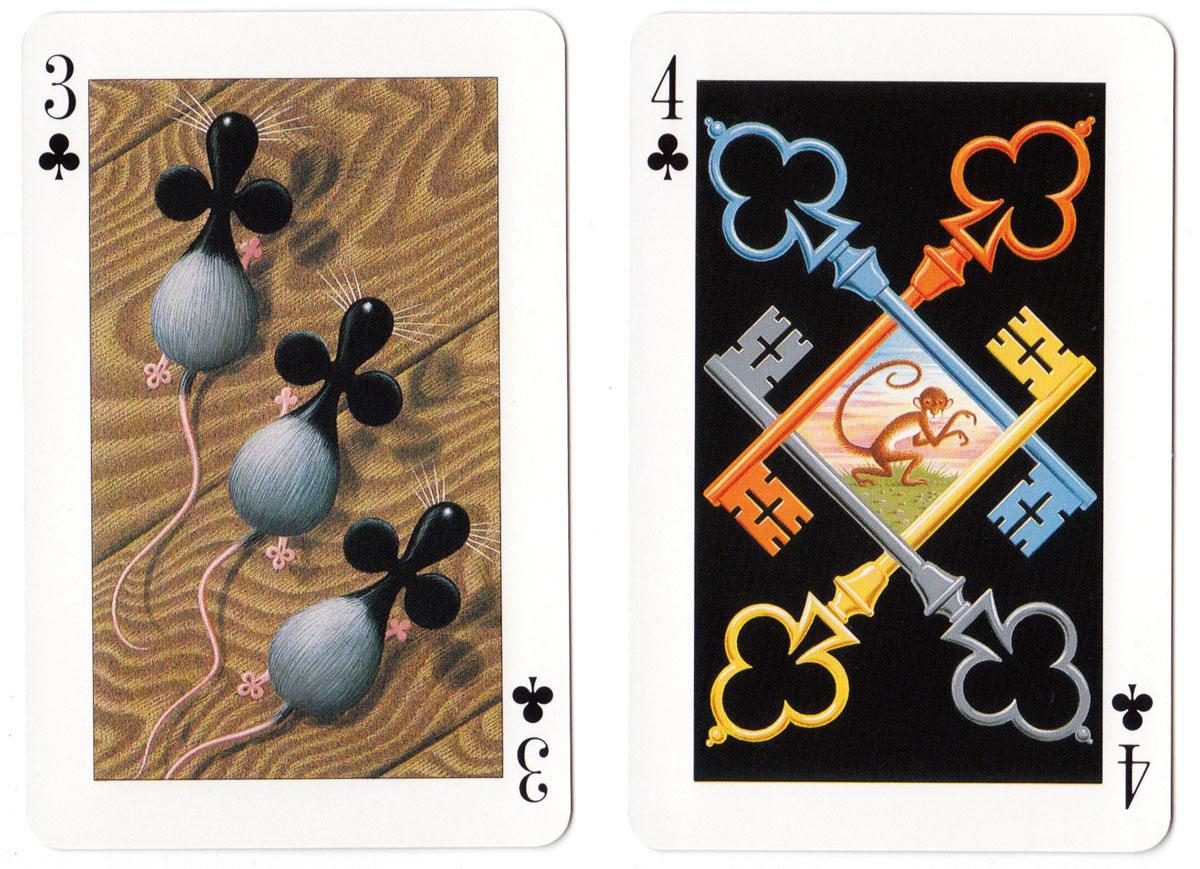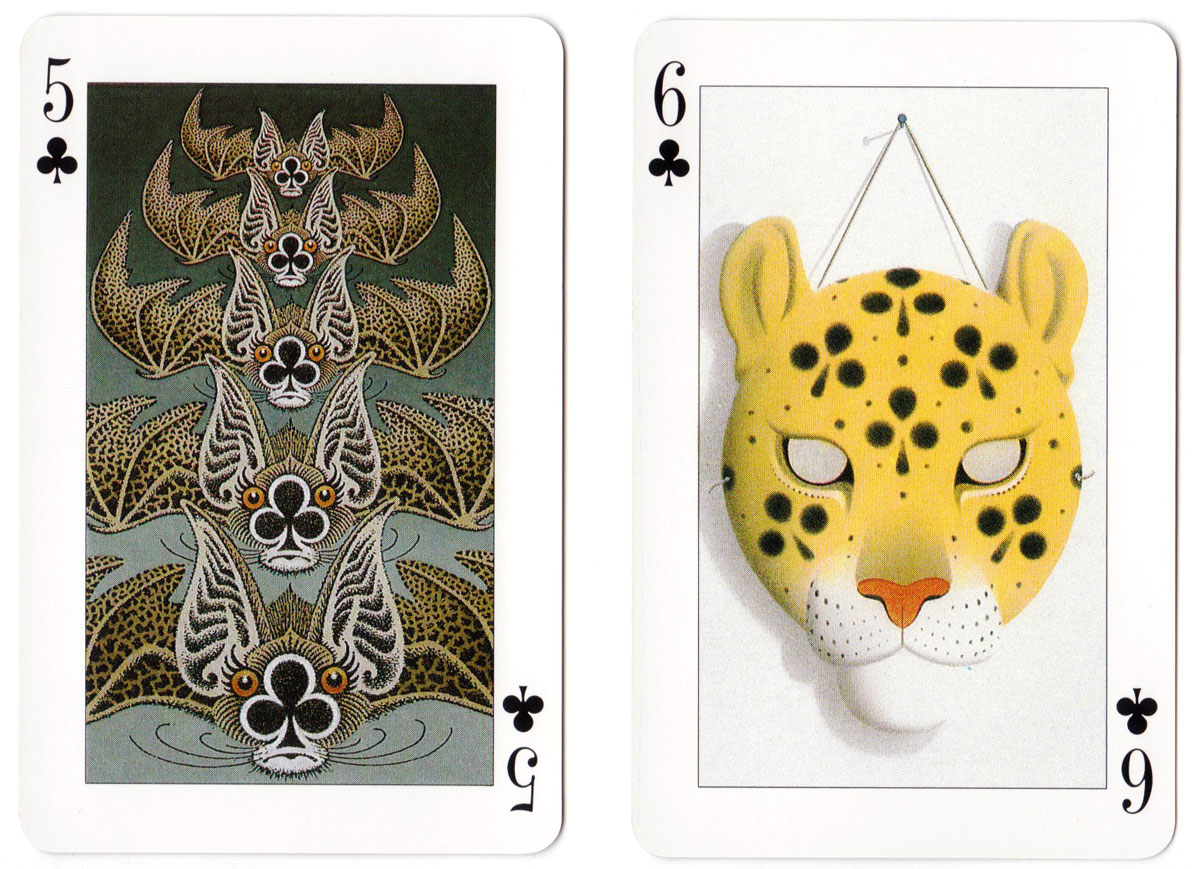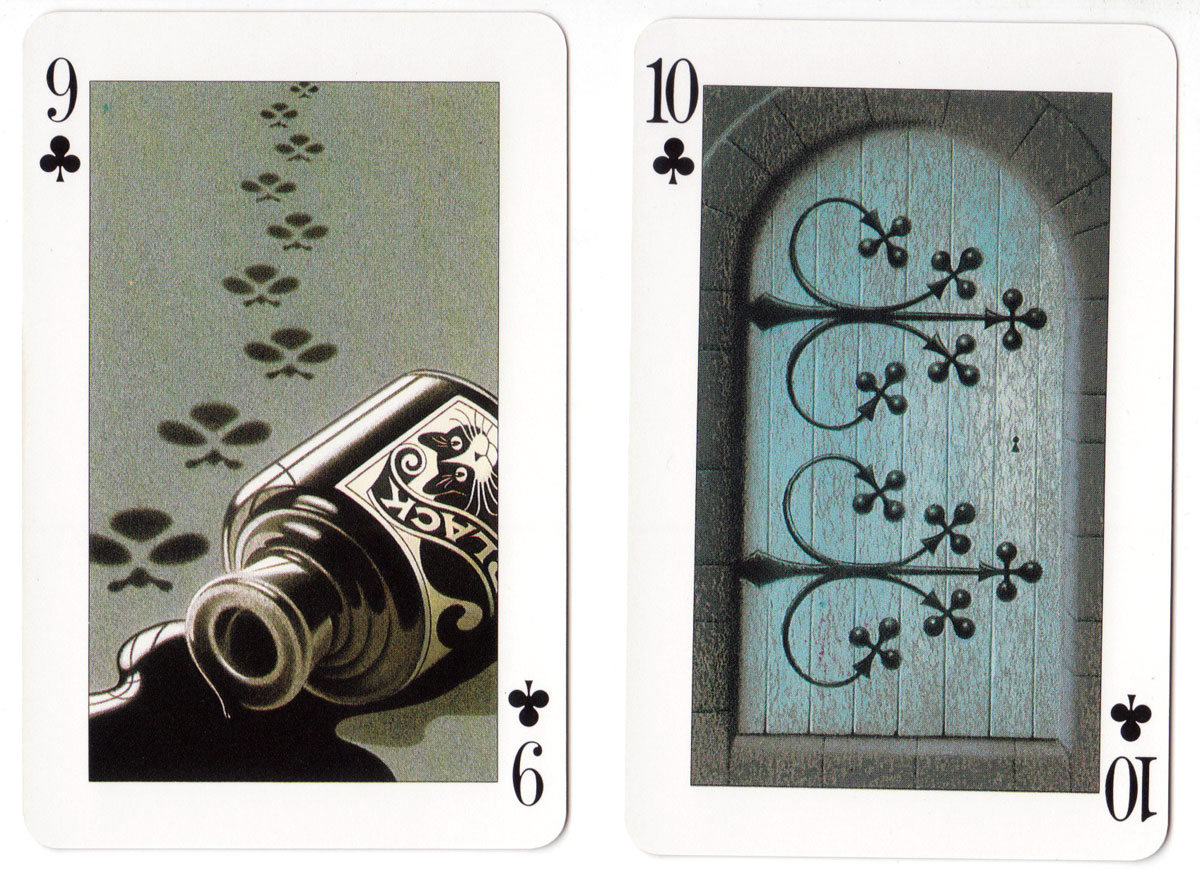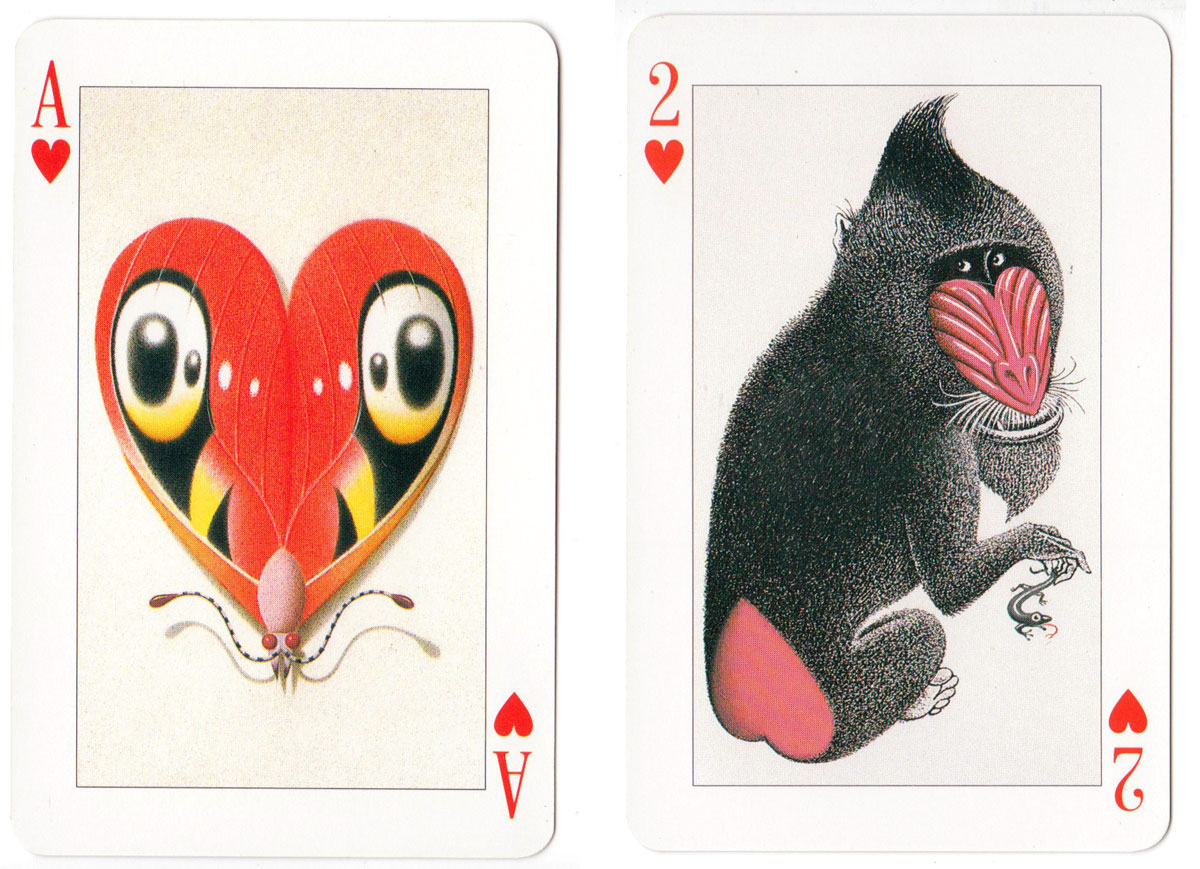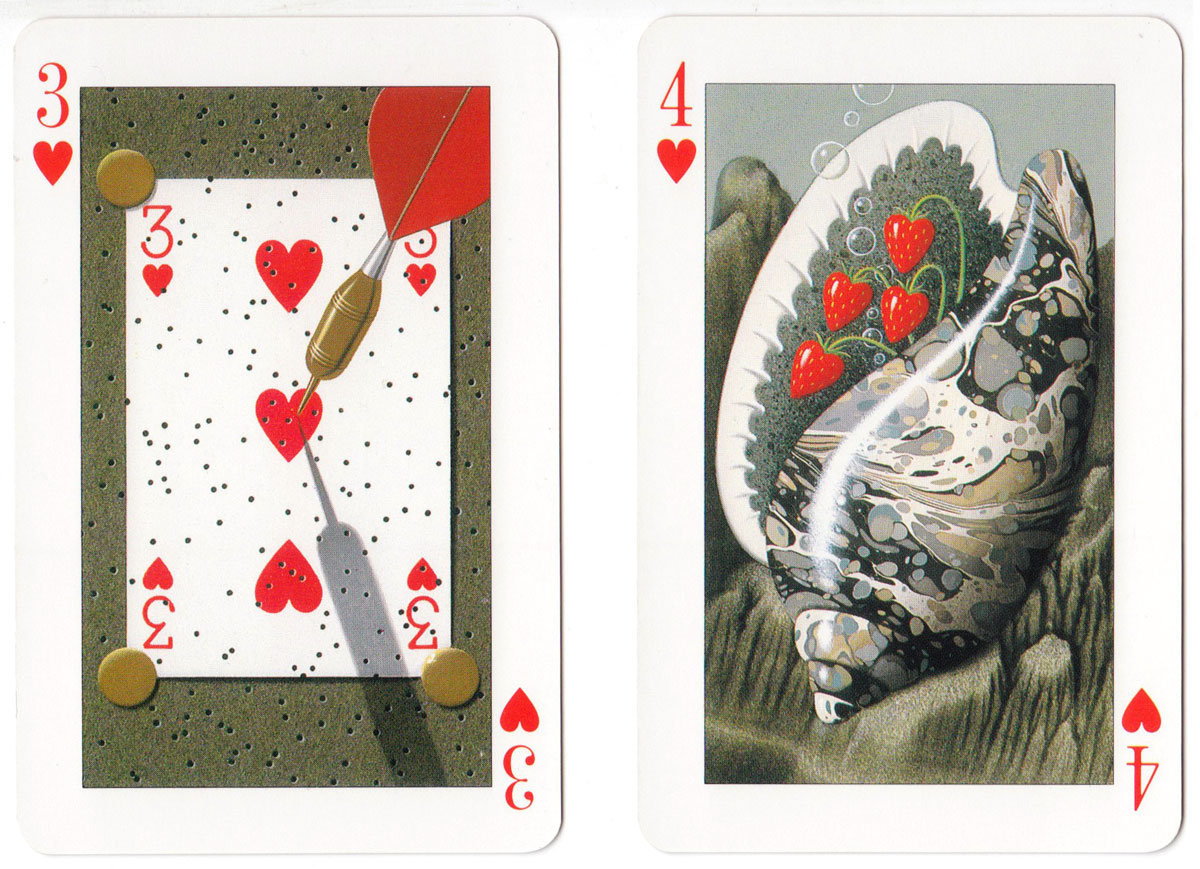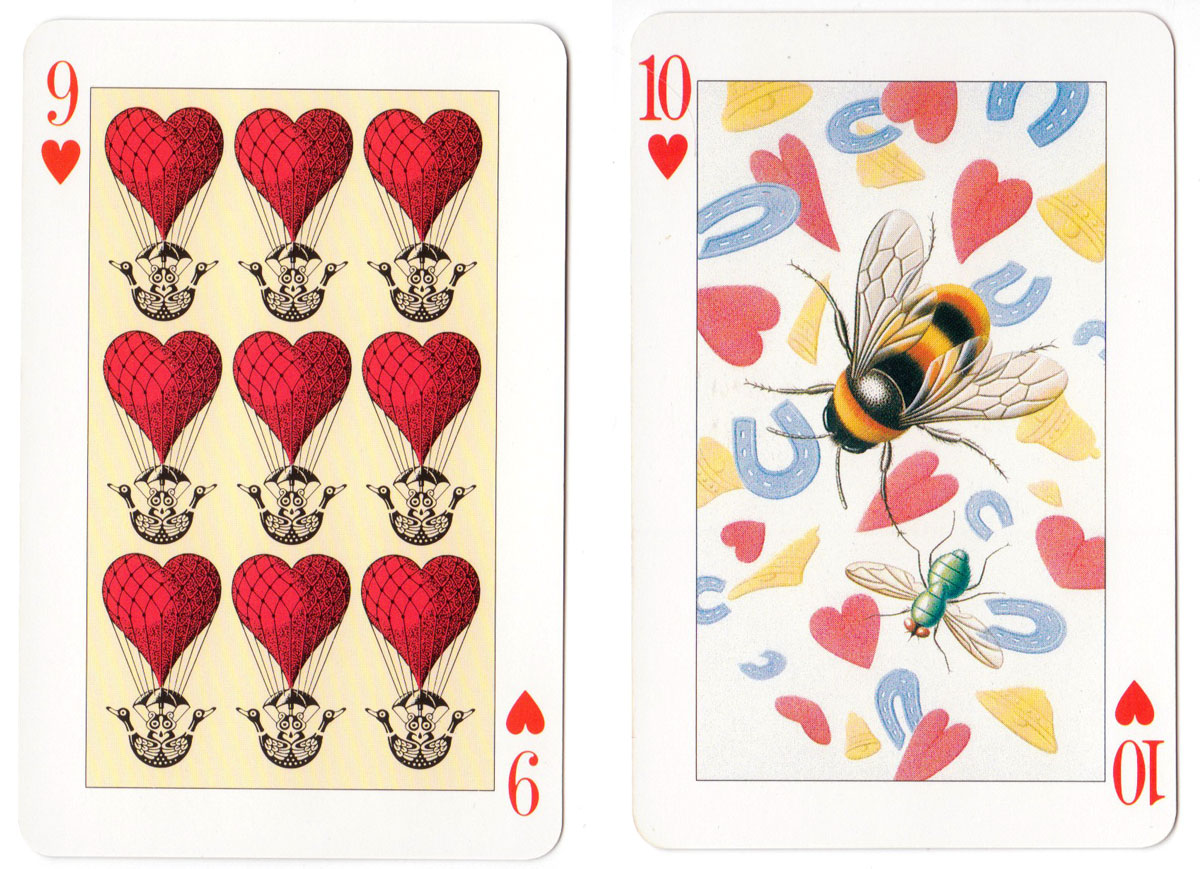The Key to the Kingdom
“The Key to the Kingdom”, an enchanted deck of illuminated playing cards designed by Tony Meeuwissen based around traditional rhymes and verses.
Tony Meeuwissen’s “The Key to the Kingdom” - an enchanted deck - is a magnificent set of illuminated and transformed playing cards published by Pavilion Books Ltd in 1992. Demonstrating an extraordinary level of craftsmanship, without the aid of digital technology, the illustrations are inspired by traditional rhymes or verses and can be used for a guessing game to correctly identify each verse from the cards. It is not strictly a true transformation deck because the pips are not in their conventional positions, nevertheless we can marvel at the beauty and ingenuity of the artist’s creativity, incorporating the playing card pips into the images. Tony Meeuwissen’s award winning artwork has also appeared on postage stamps, book and record covers and in leading magazines see more►
The 12 Court Cards
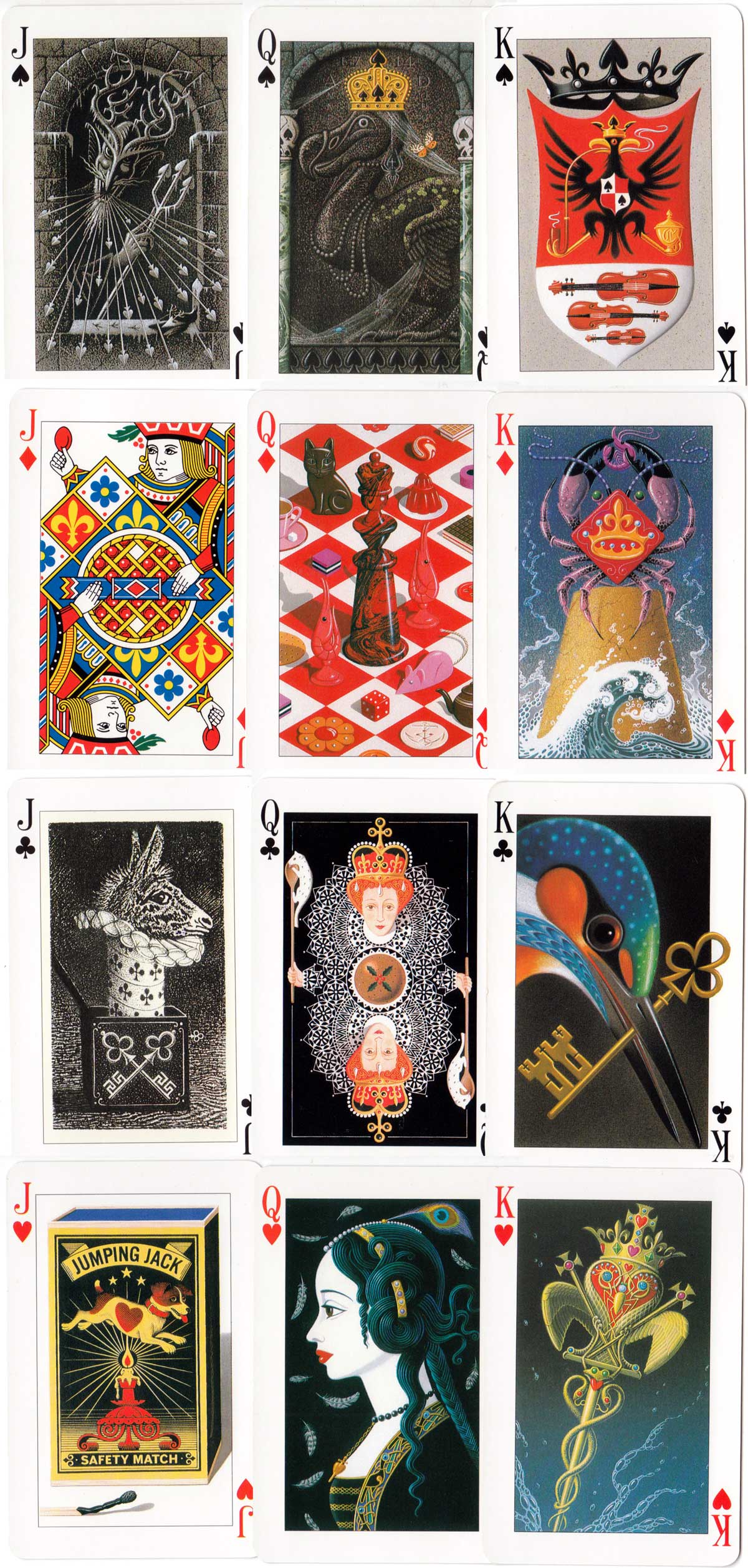
Above: cards from “The Key to the Kingdom” illuminated playing cards designed by Tony Meeuwissen, © Pavilion Books Ltd► Images courtesy Rex Pitts.
• See the box►
By Rex Pitts (1940-2021)
United Kingdom • Member since January 30, 2009
Rex's main interest was in card games, because, he said, they were cheap and easy to get hold of in his early days of collecting. He is well known for his extensive knowledge of Pepys games and his book is on the bookshelves of many.
His other interest was non-standard playing cards. He also had collections of sheet music, music CDs, models of London buses, London Transport timetables and maps and other objects that intrigued him.
Rex had a chequered career at school. He was expelled twice, on one occasion for smoking! Despite this he trained as a radio engineer and worked for the BBC in the World Service.
Later he moved into sales and worked for a firm that made all kinds of packaging, a job he enjoyed until his retirement. He became an expert on boxes and would always investigate those that held his cards. He could always recognize a box made for Pepys, which were the same as those of Alf Cooke’s Universal Playing Card Company, who printed the card games. This interest changed into an ability to make and mend boxes, which he did with great dexterity. He loved this kind of handicraft work.
His dexterity of hand and eye soon led to his making card games of his own design. He spent hours and hours carefully cutting them out and colouring them by hand.

Related Articles
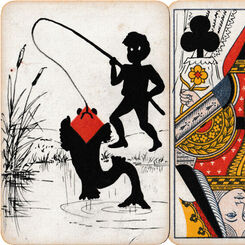
Hand-drawn transformation cards, c1875
A complete set of hand-drawn transformation cards from c1875, using a standard De La Rue pack.

Pips in Pictures
‘Pips in Pictures’ imaginatively transformed playing cards by Jennifer Gaudion, 2001.
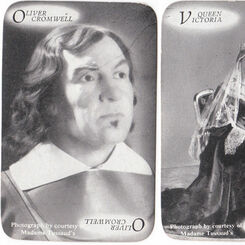
Have A Go
Have A Go card game published by Photo-Briton Ltd featuring photographs of waxwork figures from Mada...
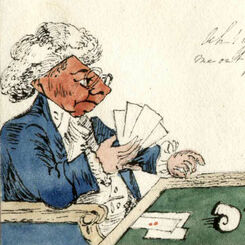
John Nixon Scrapbook, 1803
Transformation proofs from the John Nixon Scrapbook.
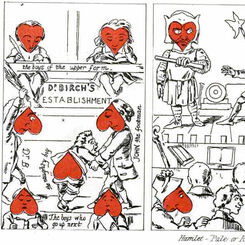
Thackeray Transformation Cards
Transformation playing cards by William Makepeace Thackeray, 1876.
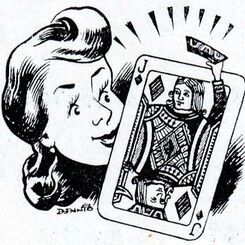
Catalogue of Magic Card Tricks
Gamagic Catalogue of Magic Card Tricks, c.1940. Everyone is familiar with playing cards, which makes...

Under the Sea
“Under the Sea” transformation playing cards, published in 2005 to raise money for the Marine Stewar...
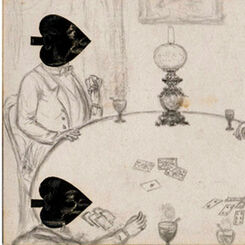
Thomas Walters Transformation
Hand-drawn transformation pack dated 1874 with the name Thomas Walters on the ace of spades.

Hand-Painted Transformation, c.1800-20
An early 19th century set of hand-painted transformation playing cards depicting contemporary scenes...
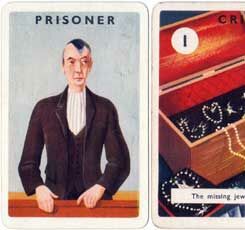
Alibi
“Alibi” the thrilling card game by Haytor, Tor Productions, 1930s.
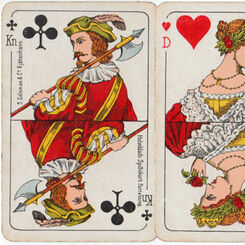
S. Salomon & Co Nr.154
Nr.154 Holmblads made by John Waddington Ltd specially for S. Salomon & Co., Copenhagen
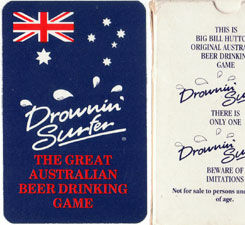
Drownin’ Surfer
Drownin’ Surfer card game
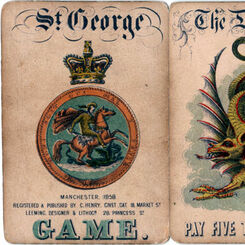
St George Game
St George Game, 1858, depicting St George and other saints engaged in battle slaying the dragon to s...
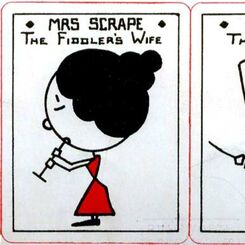
Music Manuscripts
Artwork featuring playing cards in Music Manuscripts
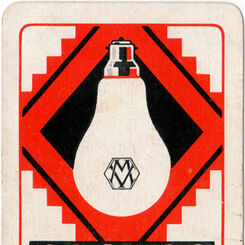
Brighter Families
“Brighter Families” promotional card game for Cosmos Lamps (Metrovick), 1930
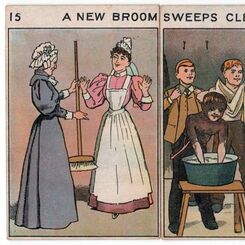
Picture Proverbs
Picture Proverbs was a Victorian card game illustrating popular proverbs which were seen as words of...
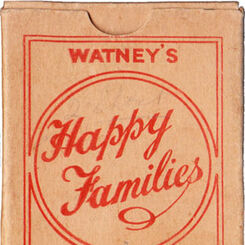
Watney’s Happy Families
A vintage Watney's Coombe Reid & Co Ltd promotional card game distributed by the brewery to their cu...
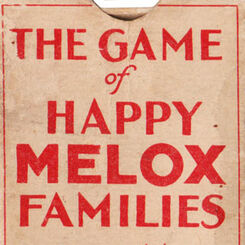
Happy Melox Families
The “Game of Happy Melox Families” was published by G. Clarke & Son of Thomas Street, London, in 192...
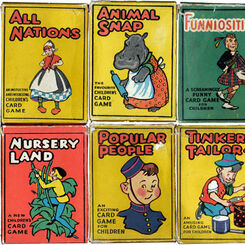
Waddy Productions
Waddy Productions Ltd was a member of the giant Amalgamated Press group and only published card game...

Caught in a Trap
A Victorian card game telling a story of a victim being ensnared in a trap, being caught, and finall...
Most Popular
Our top articles from the past 60 days


